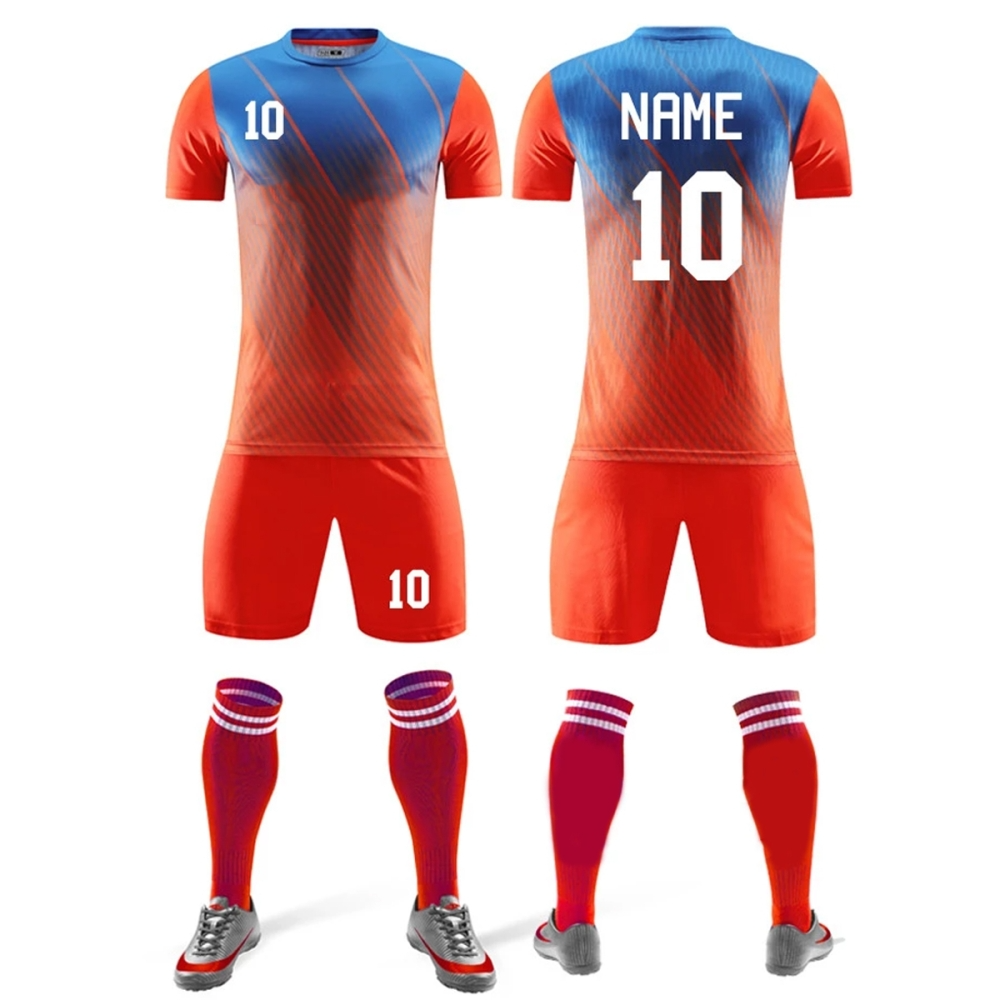A soccer uniform, often called a kit, is specifically designed to meet the needs of soccer players, providing comfort, flexibility, and team identification on the field. Here’s a detailed description of a soccer uniform:
Components:
Jersey:
- Style: Short-sleeved or sleeveless shirt.
- Design: Features the team’s colors, crest, sponsor logos, and player number on the back. The front usually displays the team’s crest and sponsor logos.
- Fit: Lightweight and form-fitting to minimize resistance and allow for unrestricted movement.
- Details: May include breathable mesh panels for ventilation and moisture-wicking properties to keep players cool and dry.
Shorts:
- Style: Loose-fitting shorts that typically reach above the knee.
- Design: Matches the jersey in color and design details. Often includes the team’s crest or logo on one leg.
- Fit: Elastic waistband with a drawstring for a secure fit during intense physical activity.
- Details: Designed for comfort and mobility, often with reinforced stitching and stretch panels.
Socks:
- Style: Knee-high socks, often with fold-over cuffs.
- Design: Matches the team’s colors and may include stripes or other design elements.
- Function: Provides cushioning and support, as well as a layer of protection against abrasions from shin guards.
Color and Patterns:
- Team Colors: Each uniform is designed in the team’s colors, which are often chosen to reflect the team’s identity and tradition.
- Home and Away Uniforms: Teams have different sets of uniforms for home and away games, with contrasting colors to avoid confusion.
- Third Kits: Some teams have a third kit for special occasions or when there is a color clash with the opponent.
Additional Gear:
- Shoes: Soccer cleats designed for traction and stability on grass or turf surfaces. Cleats may be customized to match the team’s colors.
- Shin Guards: Mandatory protective gear worn underneath the socks to protect the shins from impacts and injuries.
- Goalkeeper Kit: Goalkeepers wear a distinct jersey often in a different color from the rest of the team to differentiate them from outfield players and match officials.
Usage:
- Games: Worn during official matches to represent the team and distinguish players from each other and the opposing team.
- Training: Practice uniforms or training gear may be similar but less formal and without detailed logos or player names.
Fashion:
- Customization: Uniforms are customized with the player’s name, number, and sponsor logos. Replica jerseys are popular among fans and are sold as team merchandise.
- Tradition: Some clubs have iconic designs or patterns that pay homage to their history and heritage.
Maintenance:
- Care: Soccer uniforms require regular washing to maintain cleanliness and preserve the integrity of the fabric and colors. Machine washable but should be washed in cold water and air-dried to avoid damage.
Standards:
- Regulations: Must comply with specific regulations set by soccer governing bodies (such as FIFA or UEFA), including size and placement of logos, numbers, and sponsorships, to ensure uniformity and fairness in competition.




